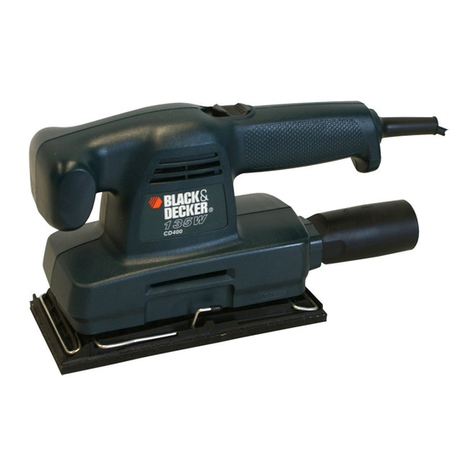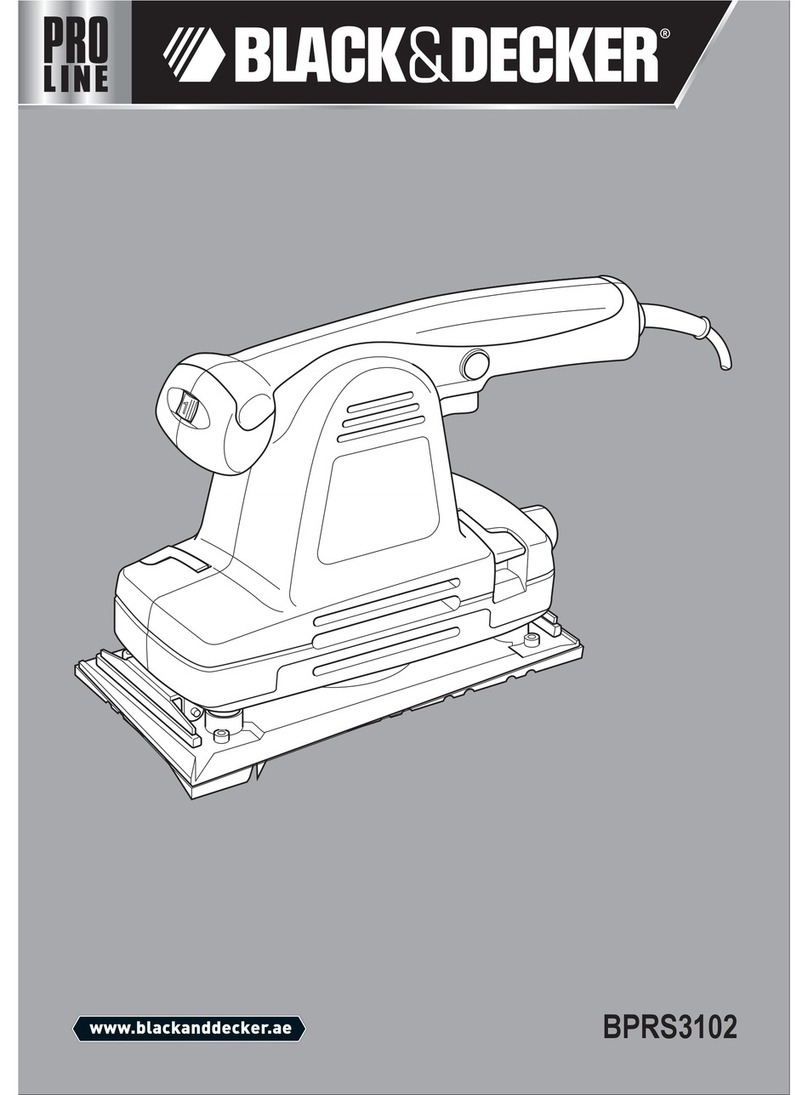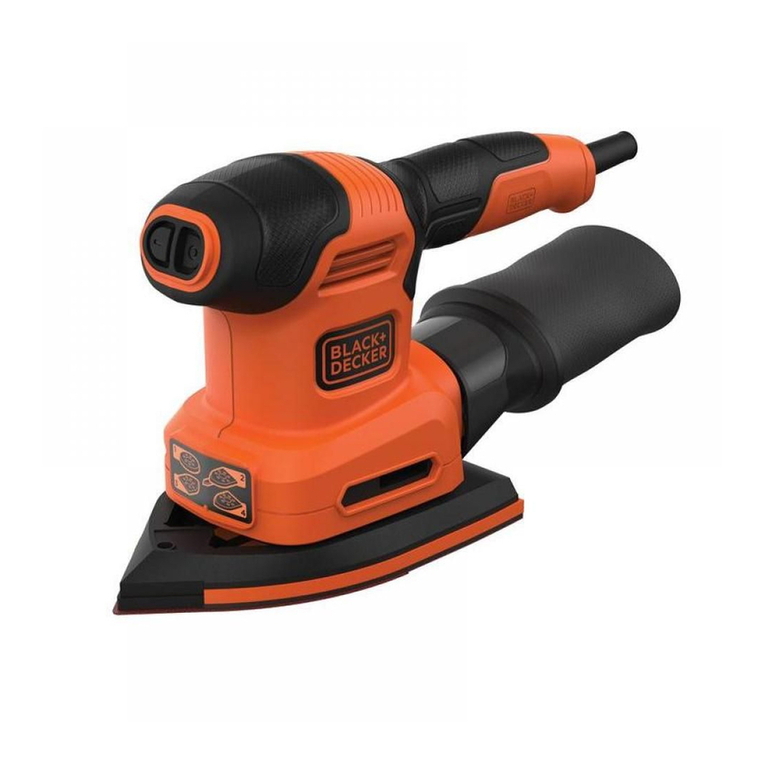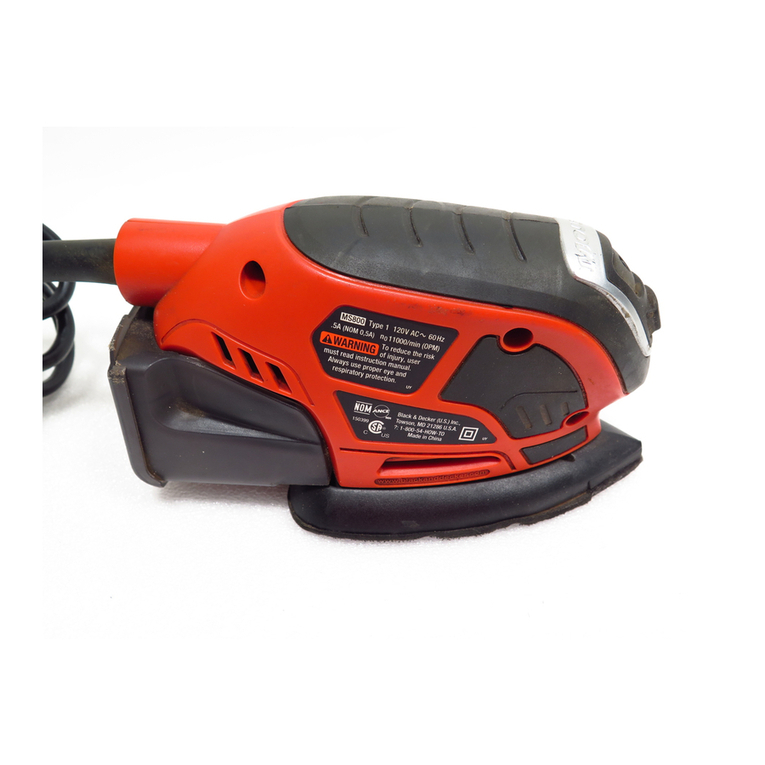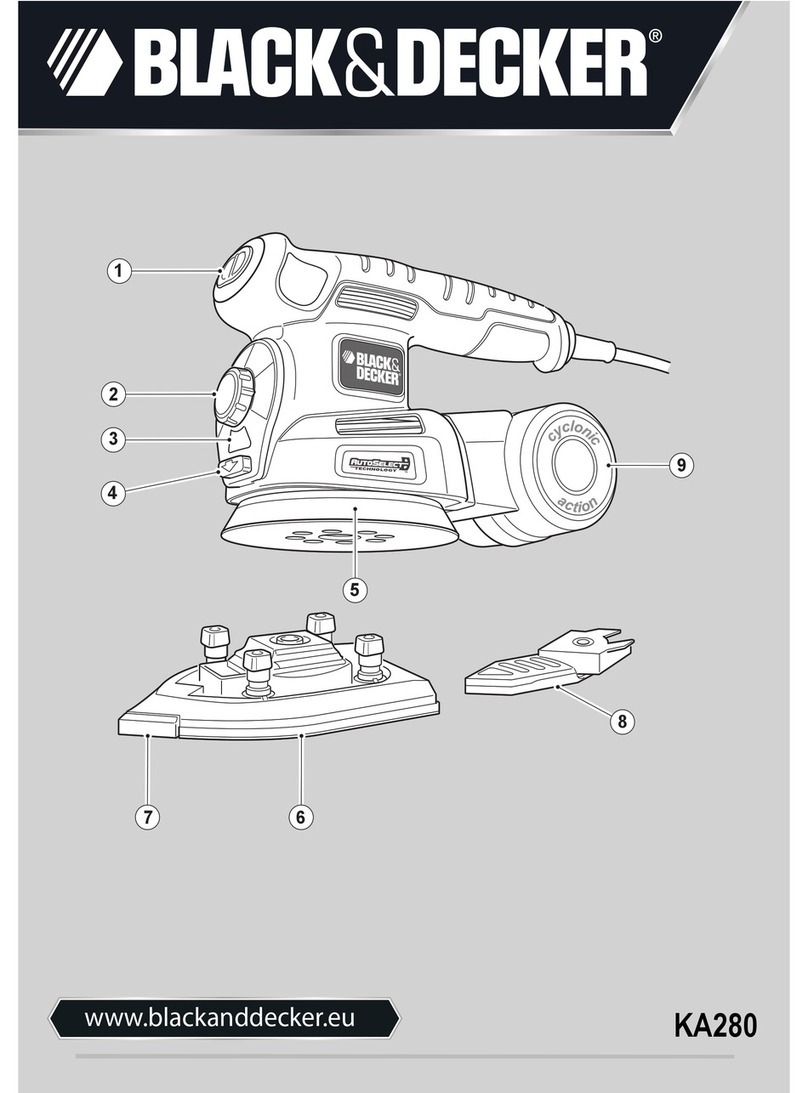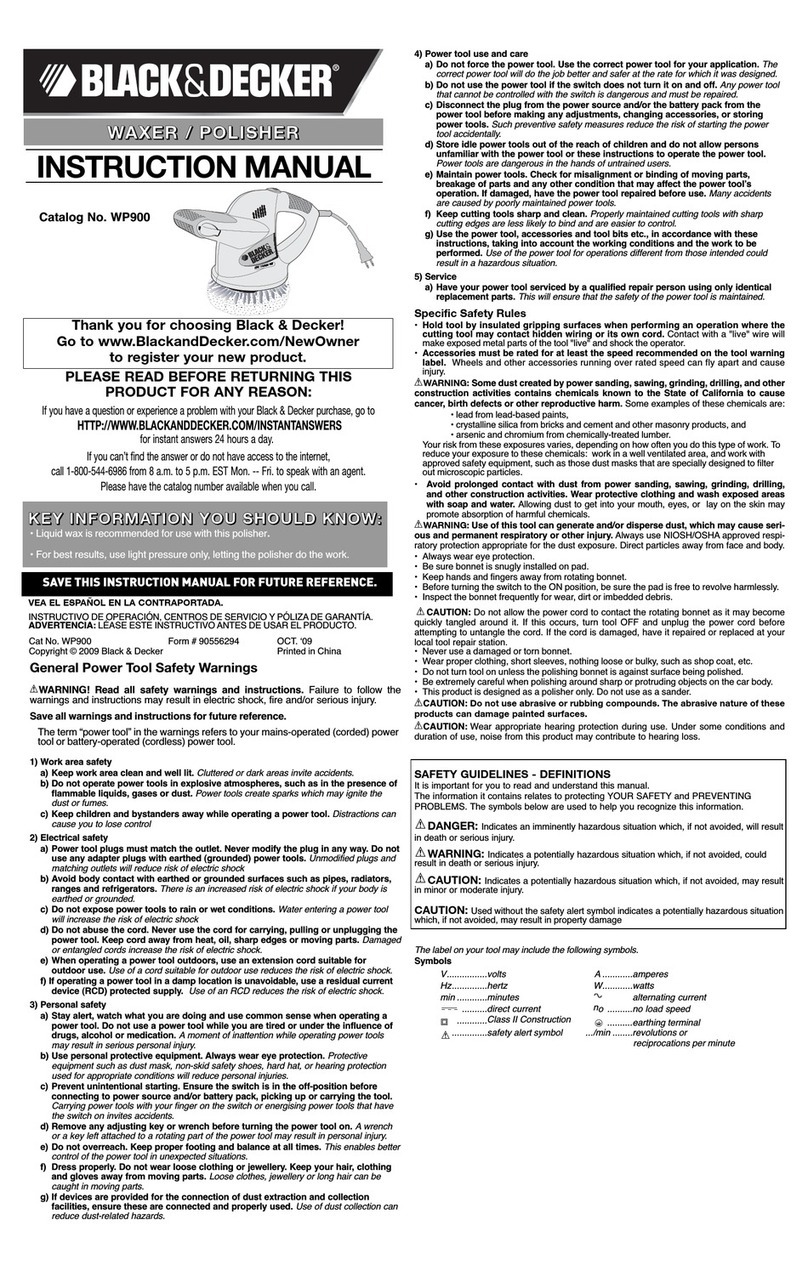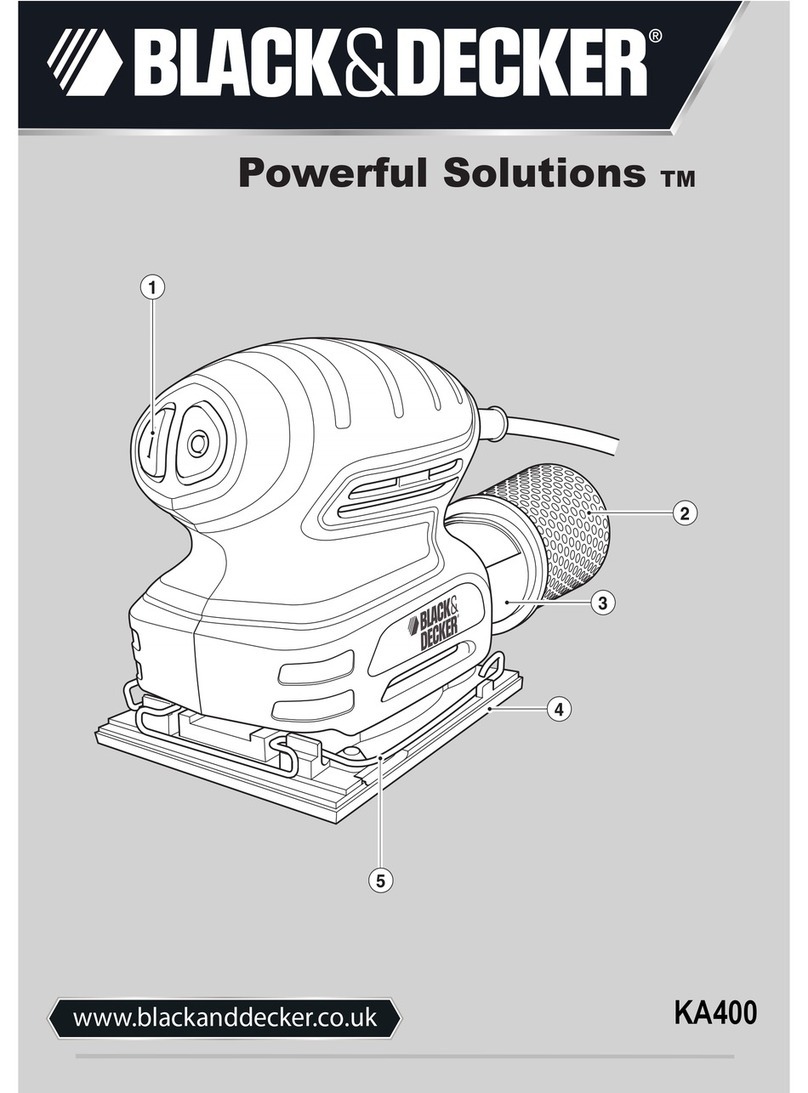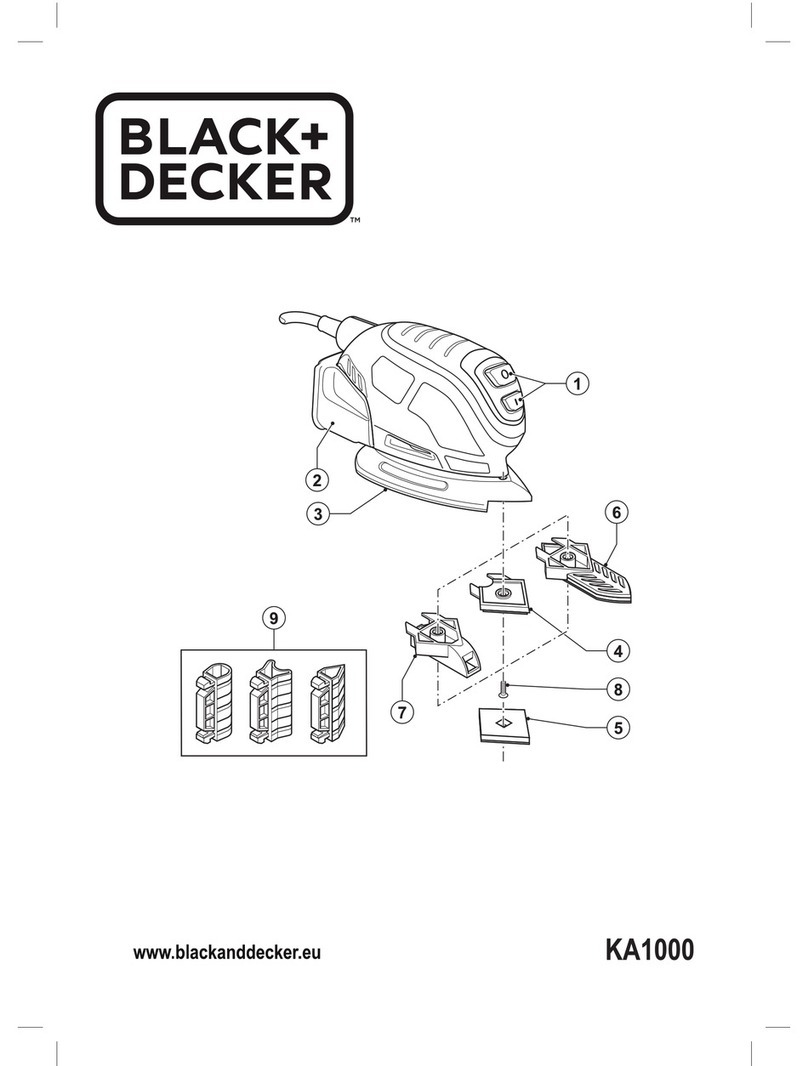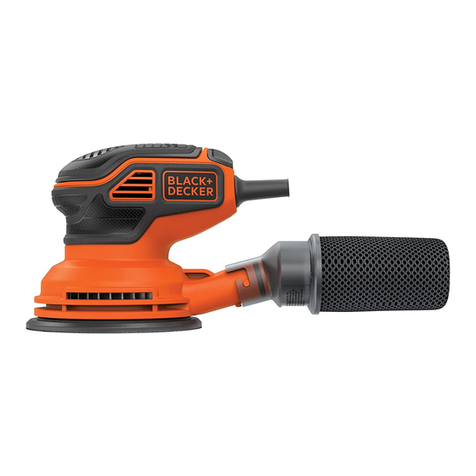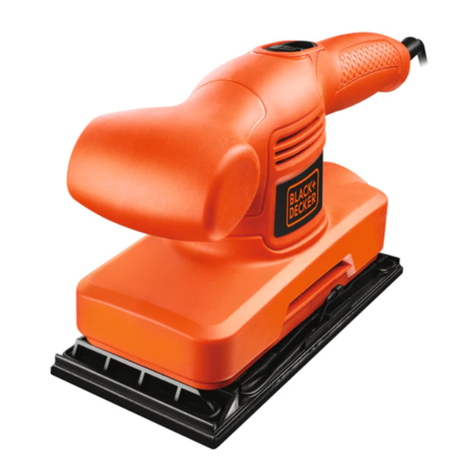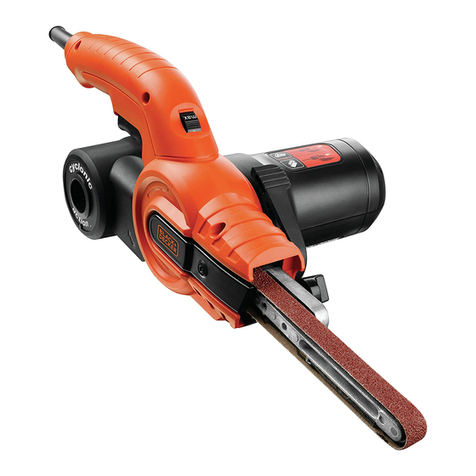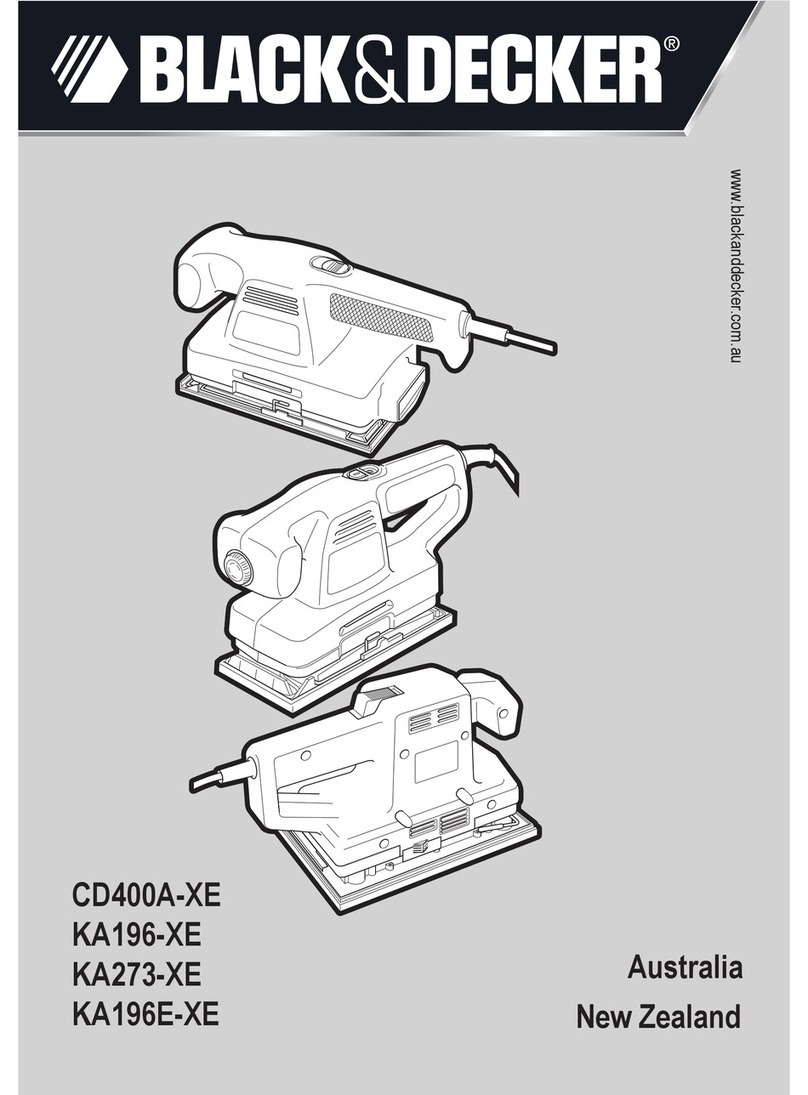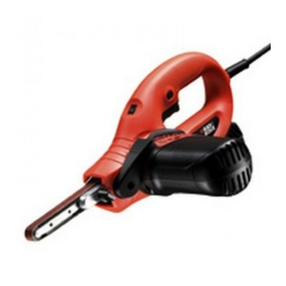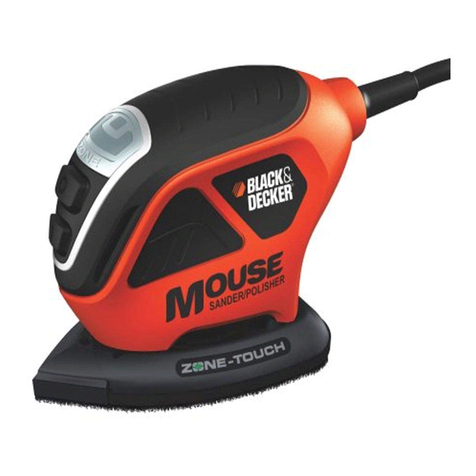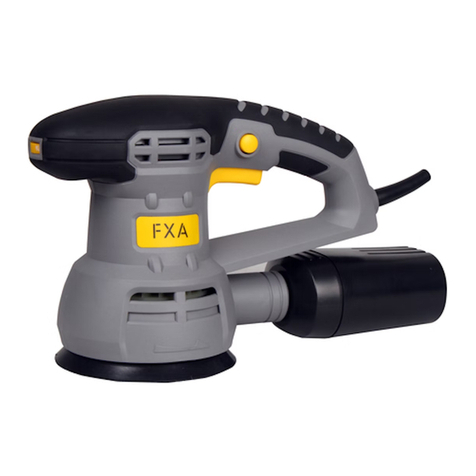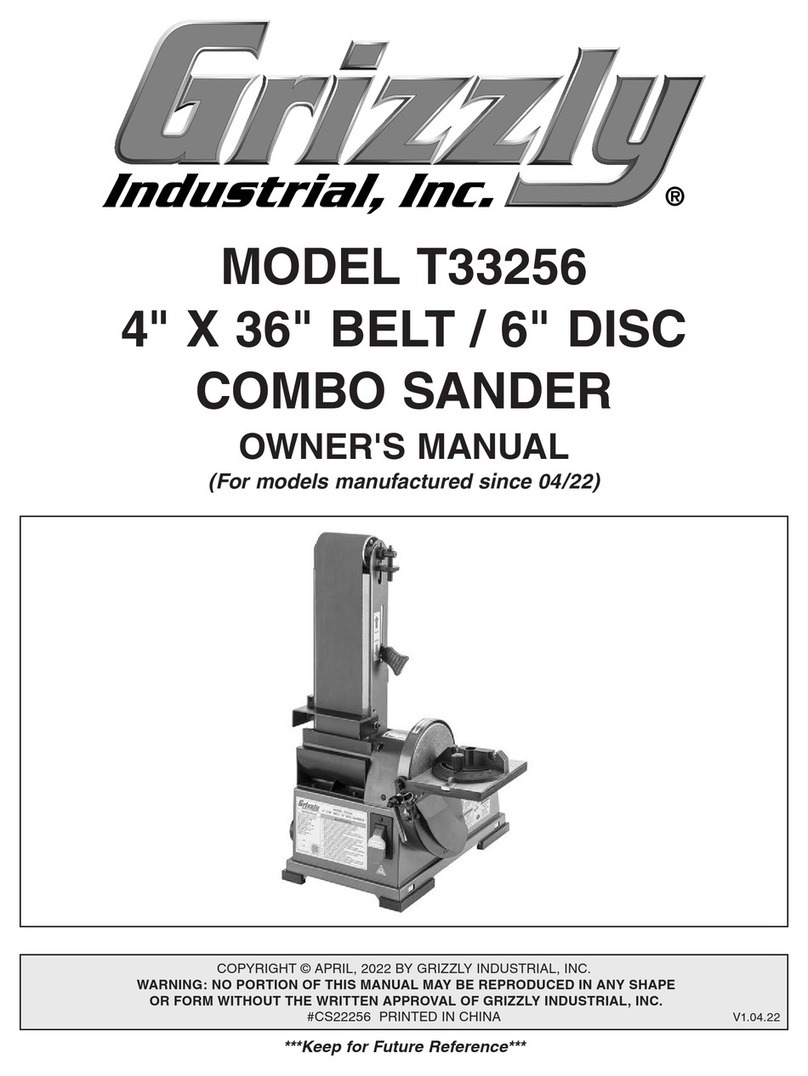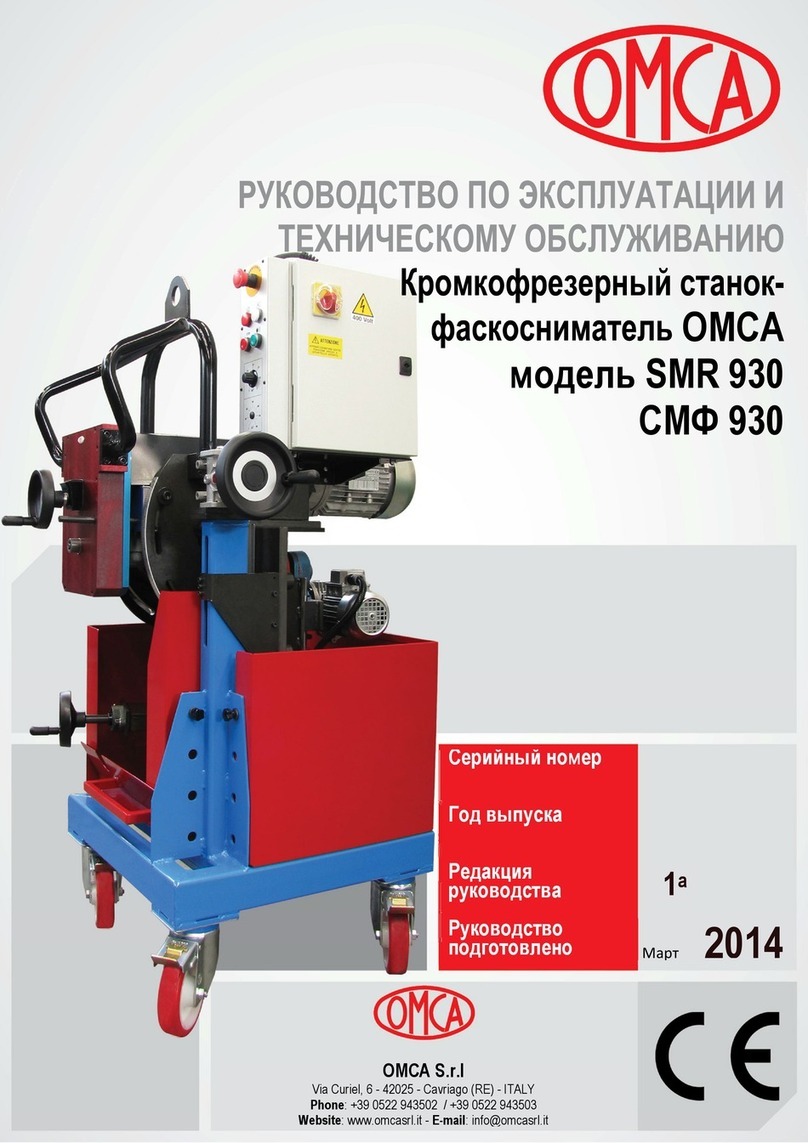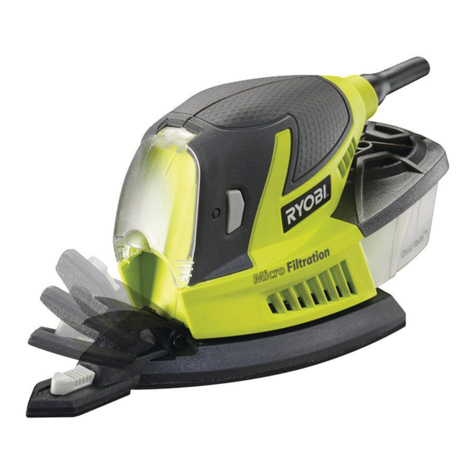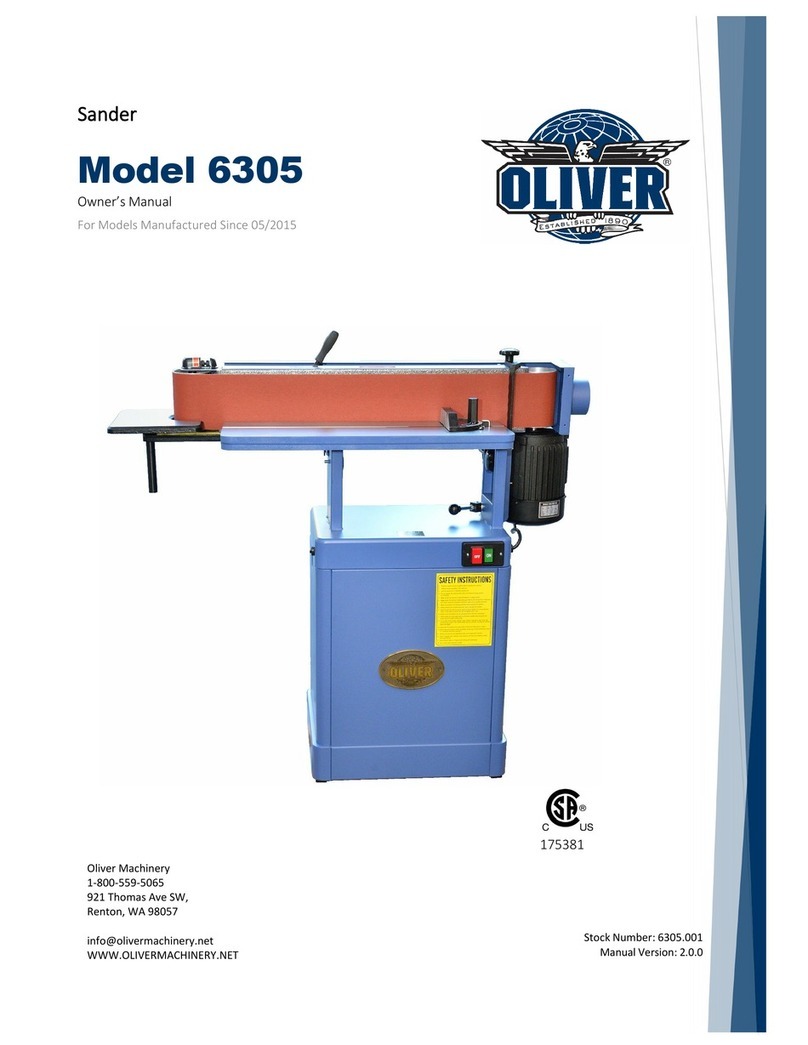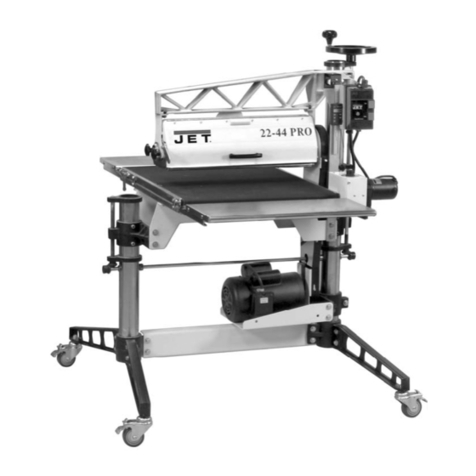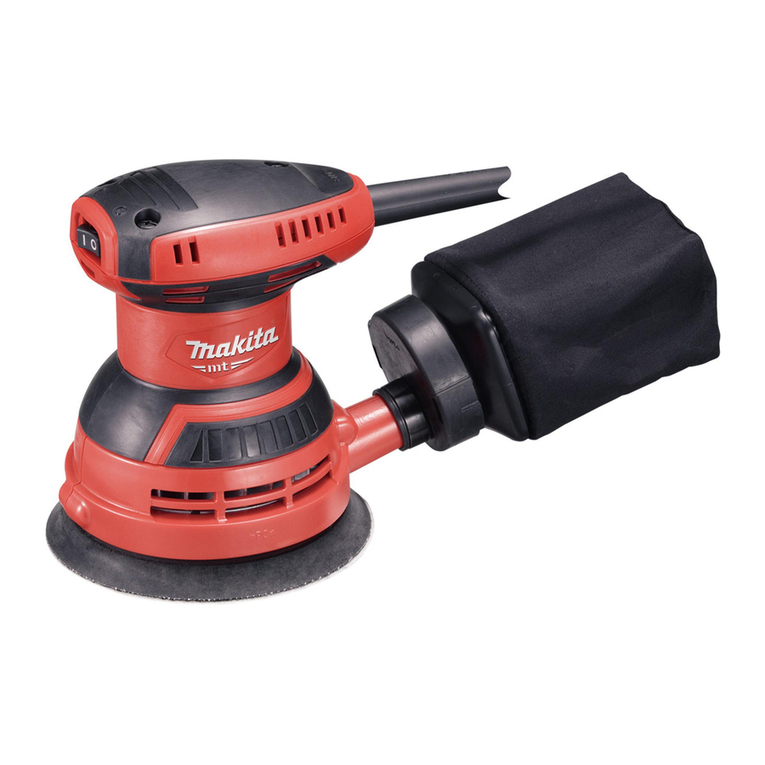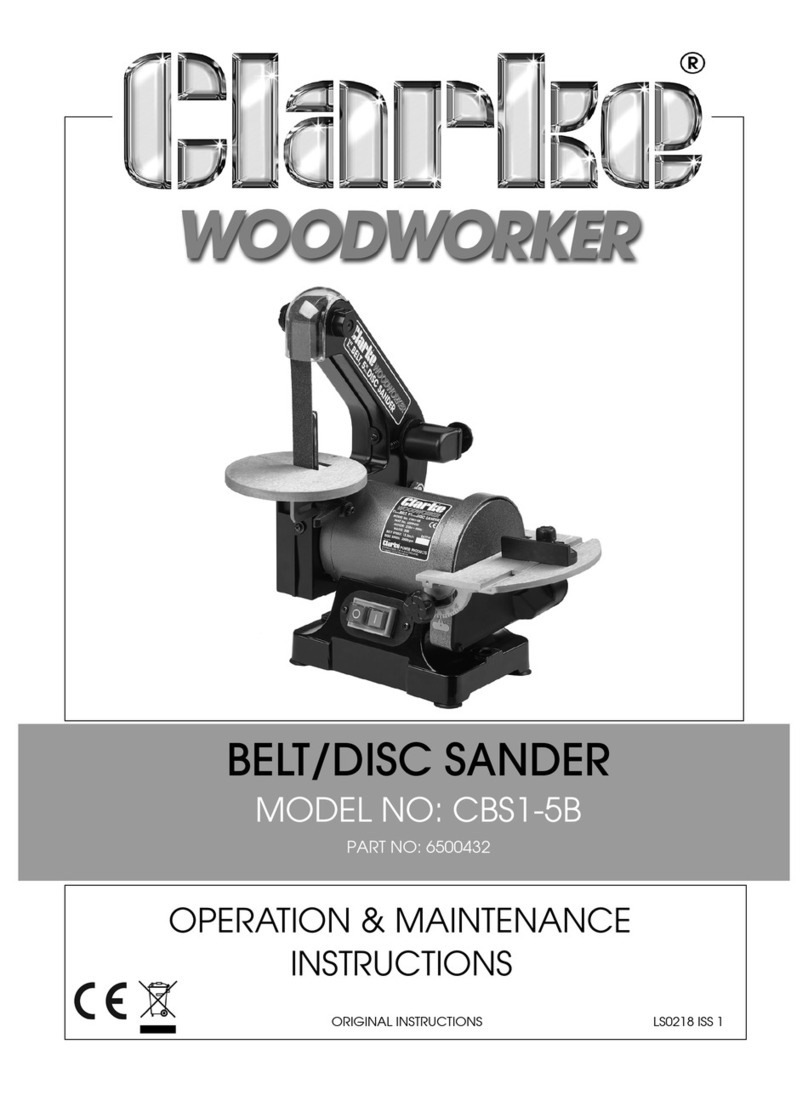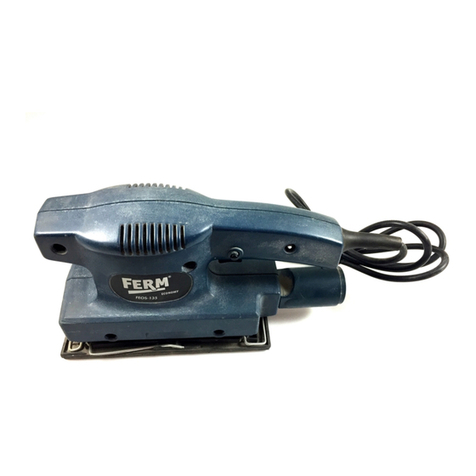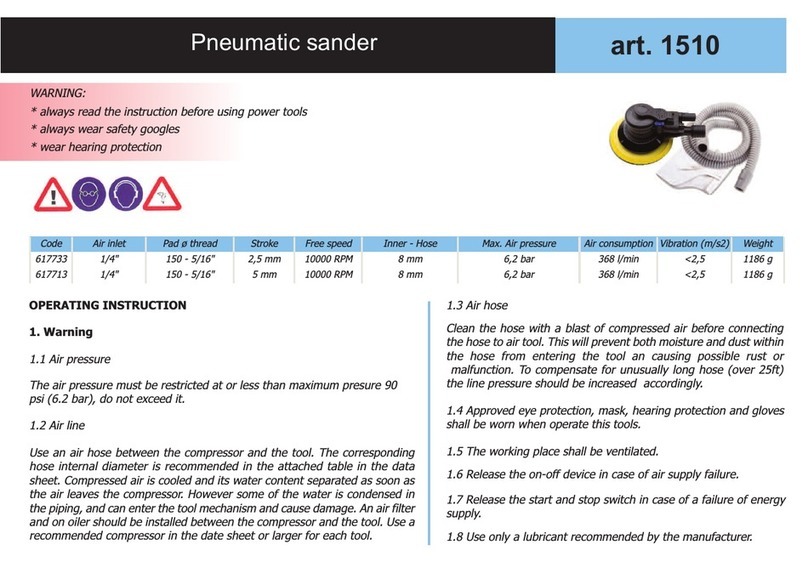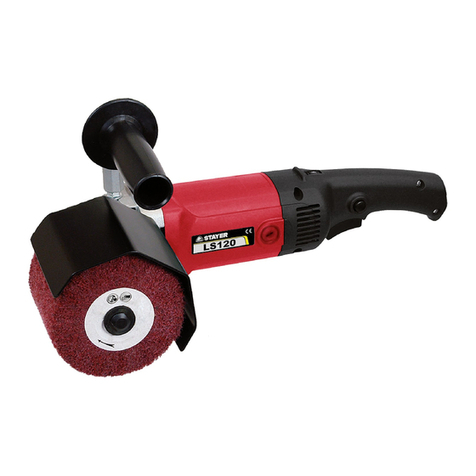
4
4
ENGLISH (Original instructions)
5
ENGLISH
(Original instructions)
these instructions to operate the power tool. Power
tools are dangerous in the hands of untrained users.
e. Maintain power tools. Check for misalignment or
binding of moving parts, breakage of parts and any
other condition that may affect the power tools
operation. If damaged, have the power tool repaired
before use. Many accidents are caused by poorly
maintained power tools.
f. Keep cutting tools sharp and clean. Properly
maintained cutting tools with sharp cutting edges are less
likely to bind and are easier to control.
g. Use the power tool, accessories and tool bits etc. in
accordance with these instructions, taking into
account the working conditions and the work to be
performed. Use of the power tool for operations different
from those intended could result in a hazardous situation.
h. Keep handles and grasping surfaces dry, clean and
free from oil and grease.
Slippery handles and grasping surfaces do not allow for
safe handling and control of the tool in unexpected
situasions.
5. Battery tool use and care
a. Recharge only with the charger specifi ed by the
manufacturer. A charger that is suitable for one type of
battery pack may create a risk of fi re when used with
another battery pack.
b. Use power tools only with specifi cally designated
battery packs. Use of any other battery packs may create
a risk of injury and fi re.
c. When battery pack is not in use, keep it away from
other metal objects, like paper clips, coins, keys,
nails, screws or other small metal objects, that can
make a connection from one terminal to another.
Shorting the battery terminals together may cause burns
or a fi re.
d. Under abusive conditions, liquid may be ejected from
the battery; avoid contact. If contact accidentally
occurs, fl ush with water. If liquid contacts eyes,
additionally seek medical help. Liquid ejected from the
battery may cause irritation or burns.
e. Maintain powertools and accessories. Check for
misalignment or binding of moving parts, breakage of
parts and any other condition that may affect the
power tools operation. If damaged, have the power
tool repaired before use. Many accidents are caused by
poorly maintained power tools.
f. Keep cutting tools sharp and clean. Properly
maintained cutting tools with sharp cutting edges are less
likely to bind and are easier to control.
g. Use the power tool, accessories and tool bits etc. in
accordance with these instructions, taking into
account the working conditions and the work to be
performed. Use of the power tool for operations different
from those intended could result in a hazardous situation.
6. service
a. Have your power tool serviced by a qualifi ed repair
person using only identical replacement parts. This
will ensure that the safety of the power tool is maintained.
Additional power tool safety warnings
@Warning! Additional safety warnings for sanders
@Warning! Contact with or inhalation of dusts
arising from sanding applications may endanger
the health of the operator and possible bystand-
ers. Wear a dust mask specifi cally designed for
protection against dust and fumes and ensure
that persons within or entering the work area are
also protected.
uHold power tool by insulated gripping surfaces when
performing an operation where the sanding accessory
may contact hidden wiring. Accessory contacting a "live"
wire may make exposed metal parts of the power tool
"live" and could give the operator an electric shock.
uUse clamps or another practical way to secure and
support the workpiece to a stable platform. Holding the
work by hand or against your body leaves it unstable and
may lead to loss of control.
@ Warning! Take special care when sanding some
woods (e.g. beech, oak) and metal which may
produce toxic dust. Wear a dust mask specifi -
cally designed for protection against toxic dust
and fumes and ensure that persons within or
entering the work area are also protected.
@ Warning! Use this tool in a well ventilated area
when sanding ferrous metals. Do not operate
the tool near fl ammable liquids, gases or dust.
Sparks or hot particles from sanding or arcing
motor brushes may ignite combustible materials.
@Warning! Do not sand magnesium! There is a
risk of fi re or explosions.
uThoroughly remove all dust after sanding.
uThe intended use is described in this instruction manual.
The use of any accessory or attachment or performance
of any operation with this tool other than those recom-
mended in this instruction manual may present a risk of
personal injury and/or damage to property.
4
ENGLISH (Original instructions)
5
ENGLISH
(Original instructions)
Safety when sanding paint
@ Warning! Observe the applicable regulations
for sanding paint. Pay special attention to the
following:
uWhenever possible, use a vacuum extractor for dust col-
lection.
uTake special care when sanding paint which is possibly
lead based and may produce toxic dust:
uDo not let children or pregnant women enter the work
area.
uAll persons entering the work area should wear a mask
specially designed for protection against lead paint dust
and fumes.
uDo not eat, drink or smoke in the work area.
uDispose of dust particles and any other removal debris
safely.
Safety of others
uThis appliance is not intended for use by persons (includ-
ing children) with reduced physical, sensory or mental
capabilities, or lack of experience and knowledge, unless
they have been given supervision or instruction concern-
ing use of the appliance by a person responsible for their
safety.
uChildren should be supervised to ensure that they do not
play with the appliance.
Residual risks.
Additional residual risks may arise when using the tool which
may not be included in the enclosed safety warnings. These
risks can arise from misuse, prolonged use etc.
Even with the application of the relevant safety regulations
and the implementation of safety devices, certain residual
risks can not be avoided. These include:
uInjuries caused by touching any rotating/moving parts.
uInjuries caused when changing any parts, blades or ac-
cessories.
uInjuries caused by prolonged use of a tool. When using
any tool for prolonged periods ensure you take regular
breaks.
uImpairment of hearing.
uHealth hazards caused by breathing dust developed when
using your tool (example:- working with wood, especially
oak, beech and MDF.)
Additional safety instructions for batteries
Batteries (not supplied)
u Never attempt to open for any reason.
uDo not expose the battery to water.
uDo not store in locations where the temperature may
exceed 40 °C.
u Charge only at ambient temperatures between 10 °C and
40 °C.
u Charge only using the charger provided with the tool.
u When disposing of batteries, follow the instructions given
in the section "Protecting the environment".
Do not attempt to charge damaged batteries.
$The tool is intend of indoor use only.
Labels on tool
The following pictograms along with the date code are shown
on the tool:
Warning! To reduce the risk of injury, the user
must read the instruction manual.
Wear a dust mask.
uIf the supply cord is damaged, it must be replaced by the
manufacturer or an authorised BLACK+DECKER Service
Centre in order to avoid a hazard.
Features
This tool includes some or all of the following features.
1. On/off switch
2. Dust extraction
3. Sanding base
4. Battery
Charging the battery (Not supplied) (fi g. A)
The battery needs to be charged before fi rst use and
whenever it fails to produce suffi cient power on jobs that were
easily done before. The battery may become warm while
charging; this is normal and does not indicate a problem.
Warning! Do not charge the battery at ambient temperatures
below 10 °C or above 40 °C. Recommended charging tem-
perature: approx. 24 °C.
Note: The charger will not charge a battery if the cell
temperature is below approximately 0 °C or above 40 °C.
The battery should be left in the charger and the charger
will begin to charge automatically when the cell tempera-
ture warms up or cools down.
uTo charge the battery, insert the USB charger (5) into the
Battery.
uPlug the charger into a suitable power source and switch
on.
uCharge discharged batteries within 1 week. Battery life will
be greatly diminished if stored in a discharged state.


